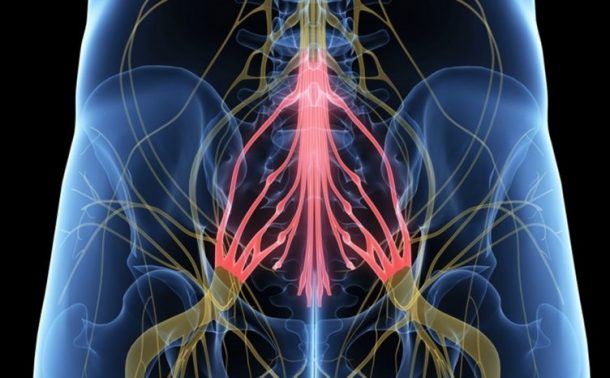Source MSNBC
The longstanding advice to “sit up straight” has been turned on its head by a new study that suggests leaning back is a much better posture.
Researchers analyzed different postures and concluded that the strain of sitting upright for long hours is a perpetrator of chronic back problems.
Using a new form of magnetic resonance imaging (MRI), researchers studied 22 volunteers with no back pain history. The subjects assumed three different positions: slouching; sitting up straight at 90 degrees; and sitting back with a 135-degree posture—all while their spines were scanned.
“A 135-degree body-thigh sitting posture was demonstrated to be the best biomechanical sitting position, as opposed to a 90-degree posture, which most people consider normal,” said study author, Waseem Amir Bashir, a researcher at the University of Alberta Hospital in Canada. “Sitting in a sound anatomic position is essential, since the strain put on the spine and its associated ligaments over time can lead to pain, deformity and chronic illness.”
Back pain, according to the National Institute of Neurological Disorders and Stroke, is the most common cause of work-related disability in the United States. It costs Americans nearly $50 billion annually. Sitting appears to be a major cause of this ailment.
“We were not created to sit down for long hours, but somehow modern life requires the vast majority of the global population to work in a seated position,” Bashir said. “This made our search for the optimal sitting position all the more important.”
When strain is placed on the spine, the spinal disks start to move and misalign. At a 90-degree sitting position, this movement was most prominent. The disks were least moved when subjects were sitting back at a 135-degree sitting position.





Very interesting article. I have gone to chiropractic care after major accidents and now have adopted it as a part of my health maintenance. I would recommend it to anyone suffering from back pain or anyone who is just trying to maintain a healthy lifestyle.
I noticed lately that I was starting to get a little larger in the mid section and so just a few days ago, I started working on my posture a little more often hoping that it might help! Now I feel better about my years of poor posture. =) Thanks for the article, it was interesting.
It’s been well-understood for decades that sitting posture increases intra-discal pressure, and McKenzie Analysis is dead on in assessing the cause of posterior disc disrpution, as well as providing a way to first centralize the pain and then extinguish it. It is easily as effective as any mechanical method (distraction or flexion/distraction) and does not entail paying for expensive equipment and charging excessive fees that are often declined by Third Parties.
HOWEVER…discs actually contributes to only a small percentage of all low back pain complaints. The number one cause is sitting in any position, because it rocks (and forces) the ilia to rotate posteriorly…and a casual review of the design of the ischial tuberosities, and what the pelvis naturally does when you drop the pelvis into sitting position makes it abundantly clear where the misalignment comes from.
A natural prevention strategy is to “poke the butt” when sitting, so that you are sitting on the anterior portion of the tuberosity rather than on the tips…because this rocks the pelvis forward, in a corrective direction. Also to get up and take mini-breaks when you have to sit for long periods.
Another simple Sitting Relief move is to use the “Bruegger Relief Position” originally put out there by Dr Bruegger in Europe. It is the “anti-slump” move of
1- feet and legs abducted (external rotation)
2- lumbars extended
3- shoulders abducted with fingers open wide and reaching back
4- chin retracted (raise sternum)
5. take 3 deep (and slow) breaths
basically, it undoes the seated slumping posture to prevent ligament-creep.
RESPONSE:
It’s also a fantastic stress reducer.
Great article, if you sit, you need to see a chiropractor. Who sits? Everyone, so everyone should be going to the chiropractor.